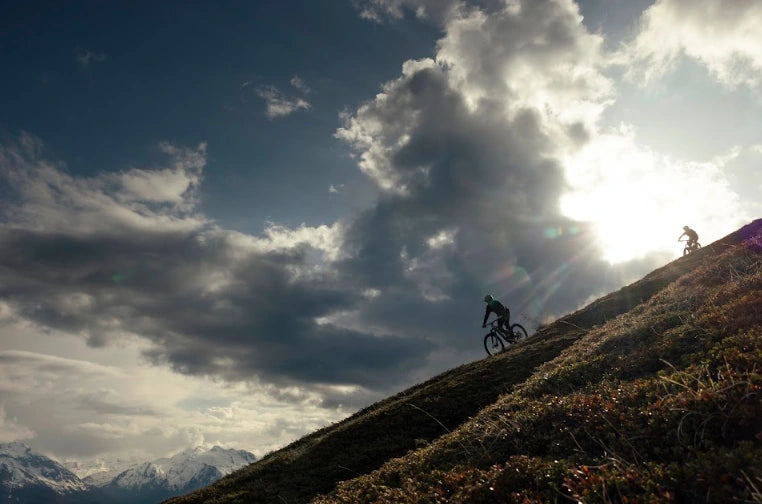
Everything about Mountain Bikes
In recent years, mountain biking has become incredibly popular, capturing the hearts of adrenaline seekers and those desiring adventure. It can be hard for those who are new to mountain biking to fully understand the basic features and categories of a mountain bike. Feel comfortable as we begin to figure out the puzzles and essential elements of these exciting adventures. This article covers what MTB bikes are, different types, and innovative features that define mountain riding. Join us as we explore the world of mountain bikes, unpack the essentials, and enjoy the unique excitement that has made mountain biking an unforgettable experience everywhere.
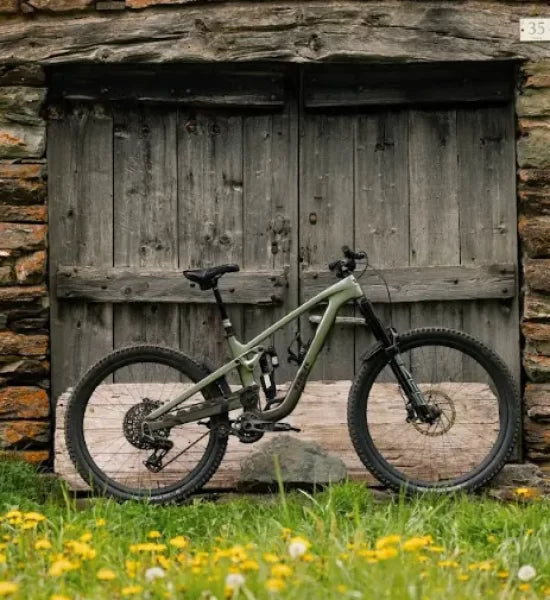
What exactly are mountain bikes?
The mountain bike is a specific kind of bicycle made for riding rough terrain. These bikes are designed to deal with the rugged and uneven conditions that frequently occur on mountainous, dirt, and trail surfaces. Mountain biking includes a range of riding styles, such as downhill, cross-country, and trail riding. The main features of mountain bikes are as follows:
Frames
Typically, mountain bike frames are constructed from steel, aluminum, carbon fiber, or a mix of these materials. as well as to meet the demands of off-road riding, they are made to be strong and long-lasting.
Tires
Compared to road bikes, mountain bike tires are broader and feature more aggressive tread patterns. On rough terrain, the bigger tires give excellent traction.
Gearing
A mountain bike’s gearing is usually designed to handle a variety of terrain.
They might have a cassette with several speeds in the rear and various crank in the front.
Brakes
Mountain bikes typically use disc brakes for increased stopping power, particularly in mud or wet weather. Hydraulic disc brakes are beloved because of their accuracy and control.
Handlebars
Mountain bikes typically have slope or straight handlebars, which improve handling and trail flexibility.
Seatpost Drop
With the push of a button, riders of many mountain bikes can swiftly adjust the saddle height. This feature is known as a dropper seatpost. This facilitates more comfortable navigation of difficult descents.
Suspensions
Suspension systems on mountain bicycles are frequently used to reduce vibrations and bumps, which enhances rider comfort and control.
There are basically two kinds of suspensions:
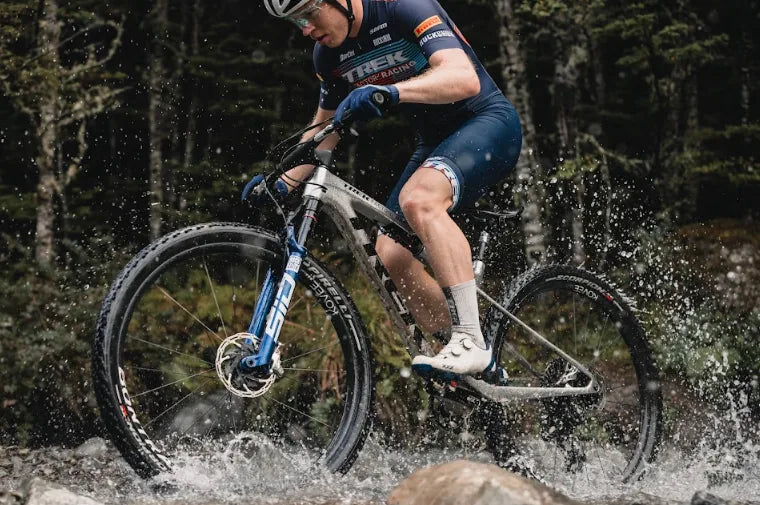
Full suspension
Full suspension mountain bikes equipped with both front and rear suspension are designed to enhance comfort and improve control when navigating challenging terrains. The inclusion of rear suspension aids in maintaining optimal traction by allowing the rear wheel to better track the contours of the ground. While this dual suspension setup provides a smoother ride over rough surfaces.
One drawback is the additional weight introduced by the rear shock and its associated hardware. The increased mass can make the bike heavier, impacting its overall agility and responsiveness. Moreover, the dynamic movement of the rear suspension may compromise pedaling efficiency, particularly during sprints and smooth climbs. The intricate nature of the suspension system also means there are more moving parts, leading to a higher maintenance requirement.
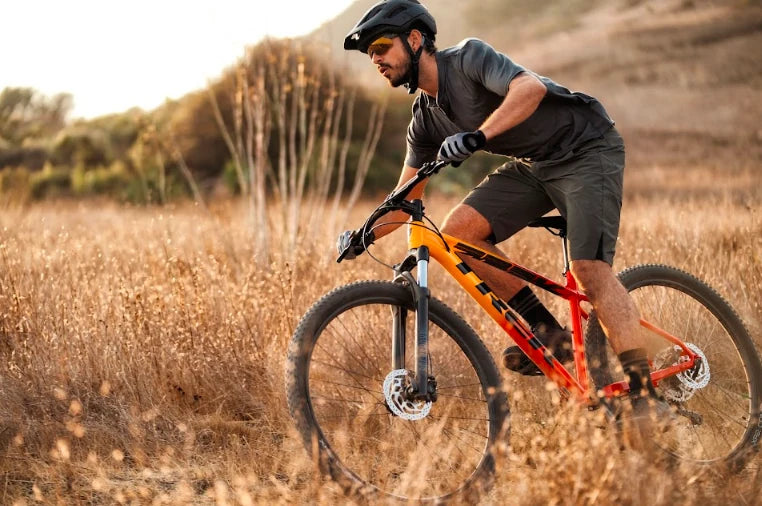
Front Suspension (Hardtail)
Hardtail mountain bikes typically feature front suspension but lack a rear shock. This design choice prioritizes a lighter overall weight and simplified maintenance. These bikes are often favored for their increased pedal efficiency, particularly during sprints and on smoother climbs. The absence of a rear shock also contributes to a more straightforward and lower-maintenance setup.
However, the trade-off for this weight reduction and simplicity is the compromised comfort and control over rough terrain. Without a rear shock to absorb bumps, riders may experience a more challenging time maintaining control, requiring additional effort to navigate uneven surfaces. The absence of rear suspension can also make it easier to lose traction, especially when tackling rough climbs. To address this concern, Trek hardtail trail bikes are equipped with wider tires featuring enhanced grip, providing riders with better stability and traction on demanding trails.
Mountain Bikes Category
There are many different off-road riding styles, and our mission is to help you choose the best mountain bike based on your tastes and the specific terrain you want to ride. Let’s discover what it is:
1- Cross country bikes
Cross country bikes (XC) mountain bikes are built for speed and effectiveness over a variety of terrains and long miles. XC bikes stress climb ability and agility with a broad range of gears, thin tires, a front suspension, and a lightweight frame. For cross country racing and trail riding.
Cross country bikes category:
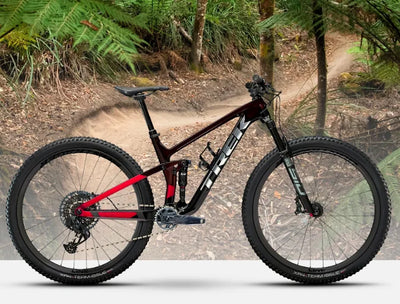
Trek Top Fuel
The Top Fuel is a strong, full-suspension mountain bicycle that runs fast and smoothly on the terrain.
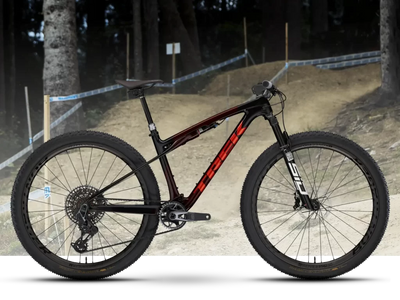
Trek Supercaliber
SuperCaliber’s IsoStrut technology makes the carbon race bike fast, lightweight and smooth.
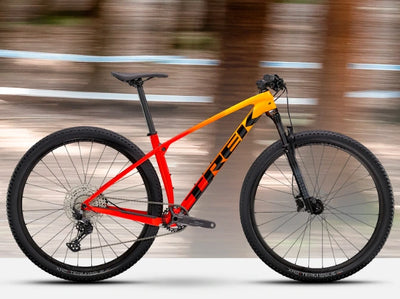
Trek Procaliber
The Procaliber Carbon Bike combines anti-fatigue and shock absorption Isospeed technology with economy and comfort for fast racing.
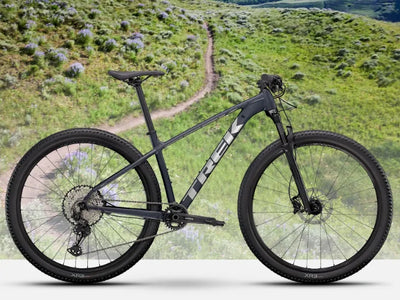
Trek X-Caliber
This X-Caliber race bike is powerful, quick, and effortless to handle on the race terrain.
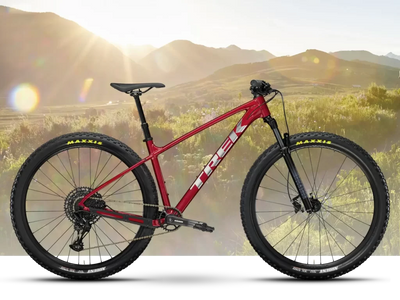
Trek Marlin
The Marlin bike is made for all-terrain discovery, whether you’re riding through the woods or on trails.
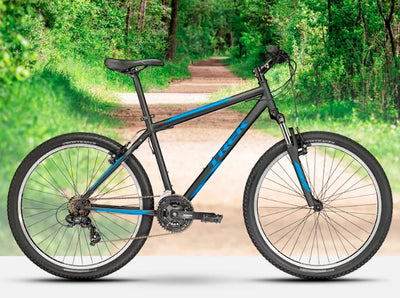
Trek 820
This bike performs excellently on both mild trails and rough roads. It is affordable, strong, and durable.
2- Trail MTB bikes
Trail bikes are responsive trek mountain bikes with both front and rear suspension for handling and comfort. They are made for a variety of terrains. Trail bikes provide a good balance for ascending and descending on a variety of trails because of their wide gear range, adjustable tire tread, and moderate frame strength. With features like drop seatposts, they give agility as well as flexibility, which makes them a great option for riders who like a variety of trail conditions.
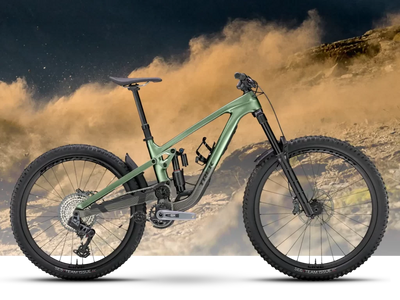
Trek Slash
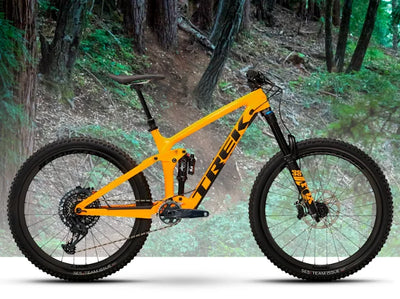
Trek Remedy
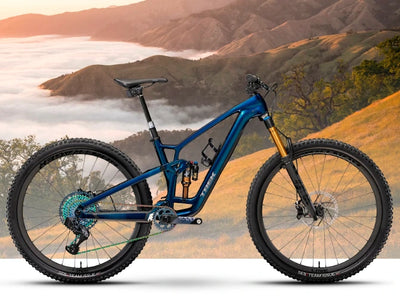
Trek Fuel EX
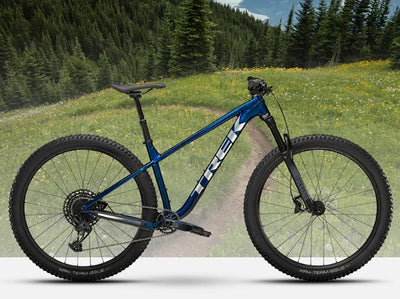
Trek Roscoe
3- Fat bikes
Fat bikes are mtb bikes marked by their large, wide tires, which are often 3.8 inches or wider. These bikes perform exceptionally well on difficult surfaces like sand and snow because of their low-pressure tires, which boost stability and traction. Fat bikes are popular for winter riding and adventure because they provide a distinctive and enjoyable riding experience that works well in a variety of circumstances.
Trek’s Fat Bikes
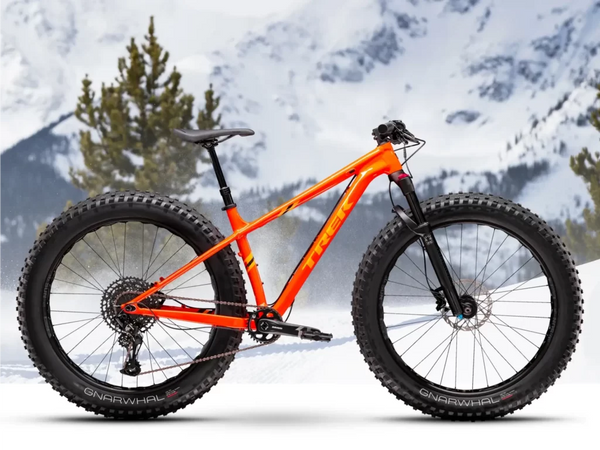
Trek Farley
You can tackle anything from sandy terrain to snow drifts with the incredible traction provided by Fat Farley tires.
4- Downhill mountain bikes
Downhill mountain bikes are designed for challenging terrain and fast descents. With strong frames, heavy suspension, and strong brakes, they put control and stability first. These bikes are great for downhill racing because they give riders the equipment they need to confidently and quickly handle difficult descents and climbs.
Trek Downhill Bikes:
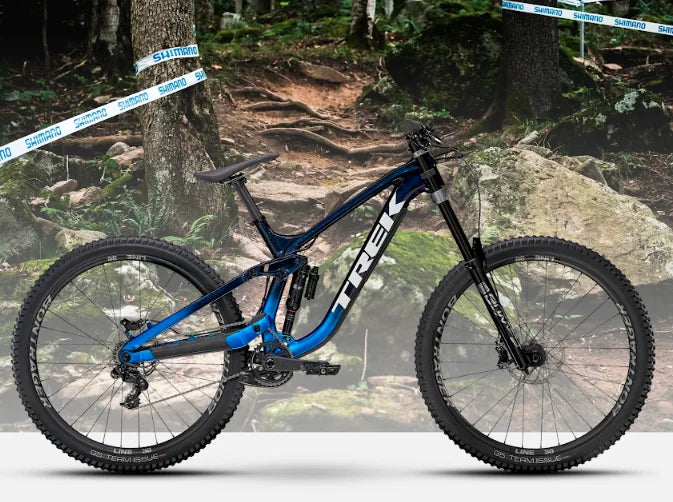
Trek Session
This bike is designed to be the fastest on the biggest mountains.
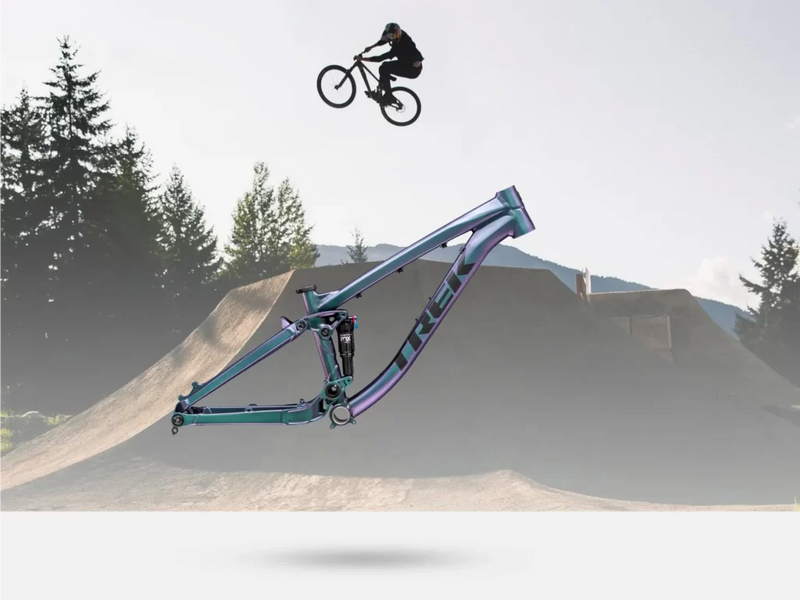
Trek Ticket
For cyclists who find themselves in the air a lot, practicing their flips and other tricks that defy gravity, this bike is perfect.
5- Electric mountain bikes
Electric mountain bikes (e-MTBs) are mountain bikes with an electric motor that helps with pedaling. It has a rechargeable battery and offers different levels of pedal support. With additional power for climbing or longer rides, E-MTBs cater to a wide range of riders’ needs. It is appropriate for a variety of terrains because its strong components balance the extra weight of the motor and the batteries.
Trek electric mountain bikes:
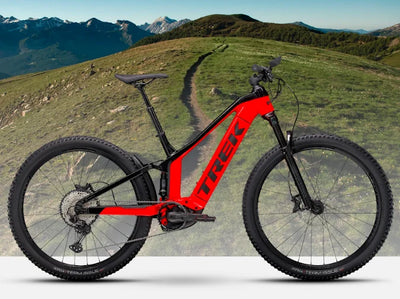
Trek Powerfly
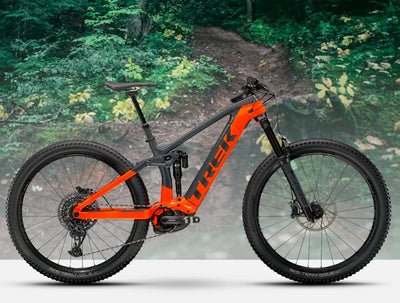
Trek Rail
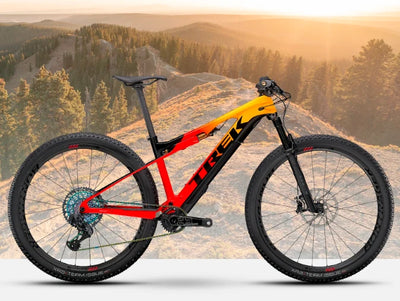
Trek E-Caliber
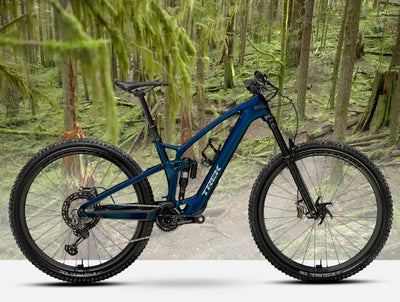
Trek Fuel EXe
Trek Mountain Bikes Prices in KSA
Mountain bicycles come in many shapes, types, and features, and each type differs from the other in features, mountain bike size, and of course prices, but mountain bike prices in the Kingdom of Saudi Arabia usually range from 2,105 SAR to 22,046 SAR. You can choose the one that best suits your riding style and budget.
In summary
Simply put, mountain bikes are the epitome of modern technology and aesthetics that have been designed to provide a unique riding experience It’s also considered The Best Bicycle for weight loss . It is a partner for challenges and adventures, rather than just a way to get over difficult terrain. These bikes are driven by the ideal mix of comfort and performance, with features like wide tires, robust frames, and advanced gear systems. Whatever kind of mountain bike you choose, you’ll be ready to take on challenges and discover exciting new perspectives on breathtaking natural paths.
“The information provided in this article was obtained from the Trek Bikes website.“
- Choosing a selection results in a full page refresh.


